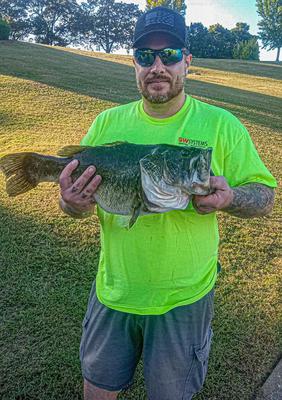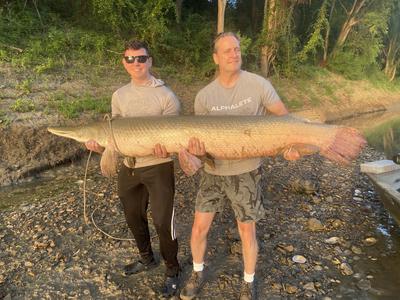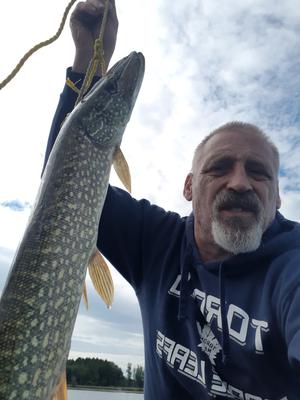Freshwater Striper Fishing Techniques And Great Methods To Use
When I head out striper fishing, the techniques I use are highly recognized to produce respectable numbers of quality striped bass.
Whether you like saltwater or freshwater fishing, utilizing the proper techniques will greatly increase your productivity out on the water.
Why would you want to spend a whole day of fishing without even a bite, when you could be catching the fish?
Otherwise, that almost just seems like a whole wasted day of fishing, unless you don't mind. As long as you are having a good time though, right? But, wouldn't you rather have a great time? Of course you would.

The striper fishing techniques we offer here will hopefully ensure that your days of fishing for striped bass are most productive.
As long as you follow the advice, and apply the techniques, you shall indeed be happy with the results. Your efforts will become second nature to you with the more time you spend out on the water and learning about the big picture.
There are many factors that play a role to have success fishing for striped bass. To quickly sum it up, understanding the stripers feeding patterns and habits is key.
Assuming that you are
basically aware of when and where to fish for them, we'll just get down
to some of my favorite striper fishing tactics and techniques.
Striper Fishing Techniques
Soaking Bait For Stripers
Bait fishing is probably the most common of striper fishing techniques. Live bait or fresh dead bait will both produce quality striped bass.
Some of the most popular baits to use when freshwater fishing for stripers are anchovies, sardines, perch, bloodworms, pile worms, live mudsuckers and bullheads, just to name a few.
Threadfin shad is about the most popular in freshwater. The shad can simply be placed on the hook whole, or even cut and butterflied, which allows for even more scent into the water column.
You can drop it straight down or cast it out rigged with a sliding sinker to keep it down and positioned in the spot you want it to stay at. Or you can simply allow it to drift weightless, and/or include a bobber.
Go here for more about what
do striped bass eat.
Trolling For Striped Bass
Trolling for stripers is generally simple and seemingly effortless. Determine which lures are best for your area and tie one on. You can also use cut bait like shad to slow roll. Brokeback minnow lures, Rebel lures, Rat 'L' Traps, and Bucktail jigs with a trailer are a few that I like, which are very productive. White and/or chartreuse, with red tips are colors that work very well, especially in clearer waters.
Once you have located the bait fish and/or the stripers,
slowly troll at around 2 to 4 miles per hour. Let out enough line to
get your lure diving down just above where the fish are holding. You
can use planer boards to get your presentation laterally further out.
The planer boards will present a greater stealthiness, and also enables
you to put out more trolling lines with the reduction of
possible entanglements.
Casting Tips For Striped Bass
Plugging and casting lures are a couple more great and exciting striper fishing techniques. What a sweet feeling of generating explosive bites from striped bass as they engulf your lure with your rod in hand! Any of the lures which I have already mentioned above will work great.
I also enjoy using swim baits. Much success comes from either soft plastic, hard plastic, or even the wooden styles. My preferred color choices are natural bait fish colors like variations of shads, white and/or chartreuse. Other natural fish colors such as trout, bass and perch will entice many strikes as well. I also enjoy using soft plastic lures that represent eels, like the Dancin' Eel made by Yum, or 10"-12" dark colored plastic worms represent very well.
Locate schools of stripers, and/or the bait fish, and cast out
to them. Casting into the current with the current will give a much
more natural presentation. Top water plugs will work great in cooler
water temperatures and overcast skies. Go deeper when the sun is up and
in warmer water.
Final Notes For These Striped Bass Techniques
These are striper fishing techniques which I use on my
freshwater fishing adventures. They work well for me and hopefully my
recommendations and advice will assist you as well. Try some of them
out and see what will be effective for you. With more time you spend
out on the water, the more experience you will gain. Good luck
freshwater fishing.
Do you have any pictures of your catch? Or a cool fishing adventure to tell? Share your striped bass pictures and check out the stories others have contributed.






Facebook Comments
Leave a comment, question or tip in the box below.